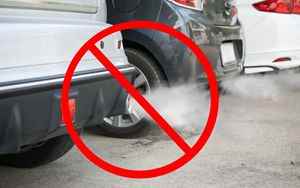(Finance) – After a long period of reduction – also in the wake of the restrictions in place caused by the pandemic – the greenhouse gas emissions, particularly in the transport, industry and energy supply sectors, according to the data reported for the report of the European Environment Agency (EEA), Trends and projections: limited recovery of EU emissions between post-pandemic recovery e energy crisis. According to preliminary data reported by EU Member States, greenhouse gas emissions have increased by 5% in 2021 compared to 2020, including international aviation. Emissions, however, remain well below the pre-Covid level of 2019.
With a looming energy crisis and particularly high gas prices, the energy supply sector has seen a partial shift to more carbon-intensive energy fuels, while the strong growth in renewables seen in recent years has lost pace in 2021. . To counter this development, it is essential that current decisions on energy infrastructure take into account the future goal of climate neutrality to avoid the effects of carbon lock-in.
“Critical action will be needed in the coming months and years to ensure that EU Member States can put in place ambitious emission reduction plans to meet the EU’s climate goals. While short-term measures are needed this winter to increase energy supplies, these investments should not block Europe from many more years of dependence on fossil fuels. Energy saving and the strengthening of renewable energy sources are essential not only to tackle the immediate energy crisis, but also to achieve climate neutrality, “he said. Hans Bruyninckx, executive director of the EEA.
The report also shows that in the coming years, “substantial reductions in emissions will have to be sustained year after year to achieve long-term climate neutrality. With the European climate law, the reduction target for 2030 has been raised to at least 55% net reduction in greenhouse gas emissions by 2030, compared to 1990 levels. The European Parliament and Member States are currently negotiating the full package Fit for 55, tenalso taking into account the proposed EU RePower plan of 2022.
To achieve the 55% net greenhouse gas emissions target for the 2030, “emissions are expected to decrease by an average of 134 million tonnes of carbon dioxide (MtCO 2 eq) per year compared to the levels estimated for 2021. This is more than double the average annual reduction achieved between 1990 and 2020. All sectors need to significantly step up their efforts to mitigate greenhouse gas emissions. Furthermore, there is a need to increase CO 2 removal through land use, land use change and forestry, reversing the current decline in the carbon sink in the EU. “
At the same time, energy consumption is expected to decrease substantially in the coming years: the new 2030 target proposed in the context of REPower EU requires more than doubling the annual energy savings in the period 2022-2030. The same is true for renewables: since 2005, the share of renewable energy in gross final energy consumption in Europe has grown by an average of 0.8 percentage points every year. This number should increase to 2.5 percentage points per year towards 2030 to reach the 45% increase in renewable energy target proposed in REPowerEU.
(Photo: © Veerathada Khaipet / 123RF)
